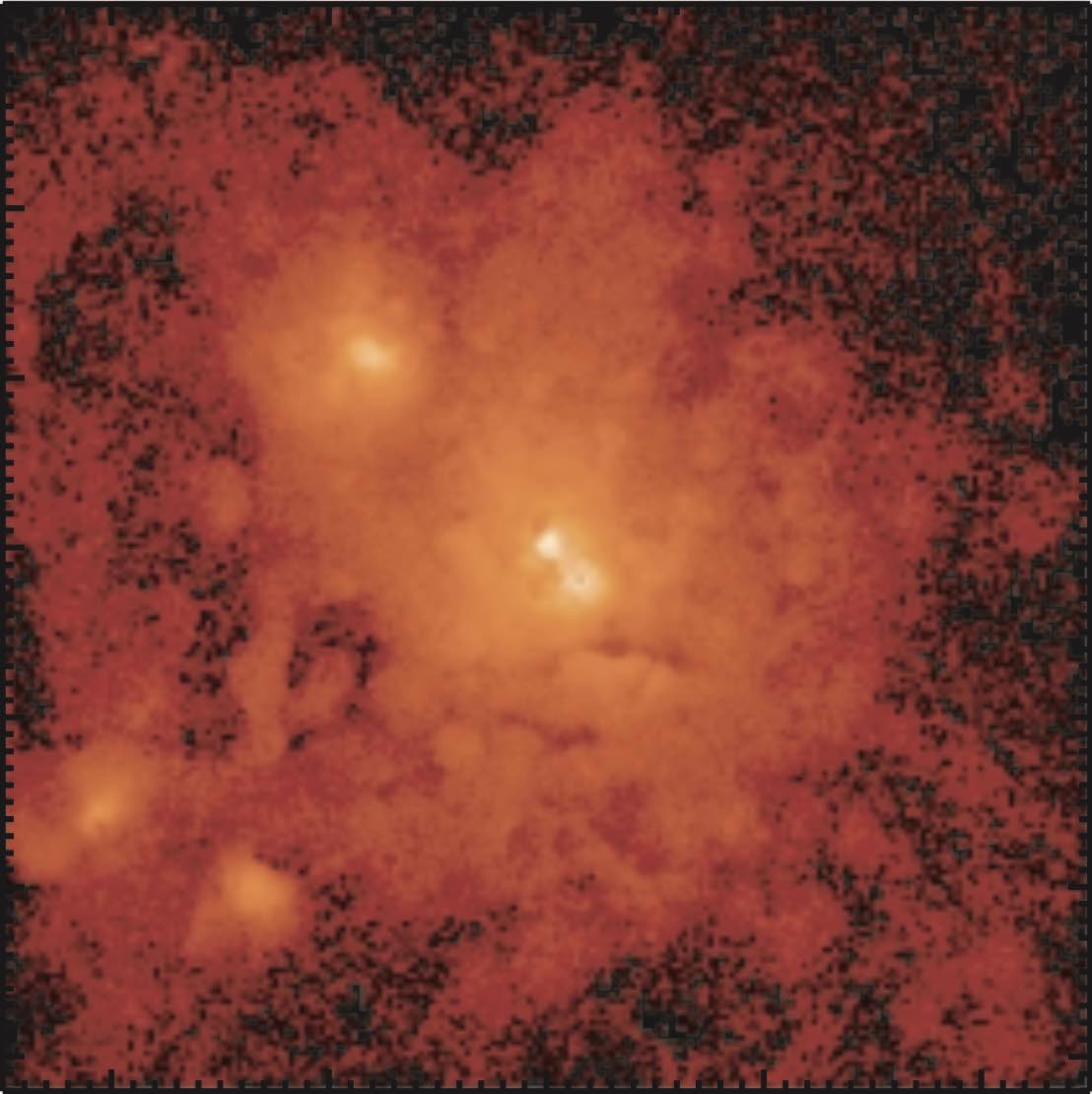Galaxies
— the most
things in the Universe!
Ultimately, my research deals with finding out as much as possible about the Universe, in particular about galaxies; the gigantic collections of billions of stars, gas, dust, and probably some unknown dark matter.
My work is mainly numerical/theoretical (as opposed to observational/experimental). Specifically, I use hydro-dynamically simulated model galaxies and conduct radiative transfer of their emitted light out through the interstellar and intergalactic medium in order to calculate how they would actually look if observed from Earth.
In essence, by comparing real and synthetic observations, we can learn about the physics of the real ones, e.g. their masses, star formation, gas kinematics, temperatures, dust contents, etc.
More generally, I would like to contribute to expanding our horizon, in one way or another.
In the sections below, links with a icon lead to short descriptions in my encyclopedia for non-astronomers.
Lyman α radiative transfer
My main expertise and interest lies in the field of Lyman α radiative transfer. Lyα is a form of UV light coming from the most abundant atomic process of the most abundant element in the Universe; hydrogen. Radiative transfer (or "RT") means the calculations of how light propagates through a medium.
When galaxies form, they emit massive amounts of Lyα photons which, if interpreted correctly, may reveal much about how the galaxies formed, and which physical conditions governed them.
During my Ph.D. I developed a numerical code (called "MoCaLaTA") that simulates the Lyα RT in the interstellar medium, enabling us to predict and interpret various properties of the appearance and the spectra — and hence of the nature — of young galaxies.
The intergalactic medium and the Epoch of Reionization
Whereas the RT of Lyα in the interstellar medium (i.e. inside the galaxies) is notoriously complex, once it enters the circum- and intergalactic medium (IGM) the calculations are comparatively simple.
I wrote another code (called "IGMtransfer") that does exactly this, calculating a so-called transmission function, TIGM. The cosmological simulation used in such a project can also be used to constrain the time at which the Universe went from being mostly neutral to being mostly ionized, due to the hard UV radiation escaping the first galaxies, the so-called Epoch of Reionization.
In simulations, we have a spectrum emitted from a galaxy, and can then use the predicted TIGM to calculate what would be observed. In reality we have an observed spectrum, and can then use TIGM to calculate, or at least get constraints on, the real, intrinsic spectrum of the galaxy.
Galaxy formation and cooling radiation
Most of the Lyα emitted from galaxies is a result of hot stars ionizing the surrounding neutral gas. When the gas recombines, there's roughly 2/3 chance that it will result in a Lyα photon.
However, another process may also add to the total Lyα budget: When galaxies form, massive amounts of intergalactic gas plummets into the potential well of the (proto-)galaxy. In order to settle down and become part of the gaseous disk, the gas must cool. It is expected that this will result in a sub-dominant, but possibly significant, amount of Lyα radiation.
I'm currently working on calculating (theoretically; not numerically) the contribution of this process.
Simple galaxy models
The power of numerical simulations of galaxy formation lies in their ability to include all sorts of complicated physics, such as
- turbulence and clumpiness of the gas
- evolution of metals (astronomers' word for all that is not hydrogen or helium)
- anisotropic morphologies of galaxies
- propagation of supernova blast waves
- magnetic fields
- …
While this produces quite realistic galaxies, at the same time it's difficult to have an overview of the impact of the various parameters entering the computations.
Another approach is to make a simple model of a galaxy, for instance as a spherical, homogeneous blob of gas, perhaps with a surrounding shell of gas expanding with the same velocity in all directions.
While such a representation may be much less realistic, it has the advantage that we know exactly what happens if, say, the expansion velocity is increased with 10 km/s. Or the density is decreased by a factor of two. I've used this approach e.g. to assess to impact of various physical conditions of galaxies on its Lyα properties.
Cosmic dust
A very important ingredient in Lyα RT is dust. Because Lyα scatters ("bounces") back and fourth millions of times on neutral hydrogen before escaping a galaxy, its path length will be tremendously increased, and thus even a tiny amount of dust mixed within the gas may be able to absorb a significant fraction of the photons, and even reshape the spectrum.
Dust is made of various metals (e.g. iron, silicon, carbon, and oxygen) and come in various amounts and size distributions, all of which will affect Lyα. Unfortunately, the final result of a Lyα RT simulation doesn't depend much on the assumed dust type, so it's not easy to constain this from such simulations, but perhaps in the future with more refined codes it will be possible.
Lyα emission from damped Lyα absorbers
Damped Lyα absorbers (DLAs) are huge clouds of neutral hydrogen, thought to be the progenitors of present-day's galaxies, and discovered as broad absorption lines in quasar spectra (or other bright objects),
Whereas most astronomical phenomena are detected due to the light they emit, DLAs thus offer a complimentary means of gaining knowledge about galaxies.
If DLAs are indeed galaxies, they should also emit light, but because of the bright background source, this is very challenging to observe.
When I started being interesting in this, Lyα emission from DLAs had only been seen a few times, but now there are several (a few tens), detected by specifically targeting metal-rich DLAs from the SDSS, using the X-shooter at the VLT, Chile.








